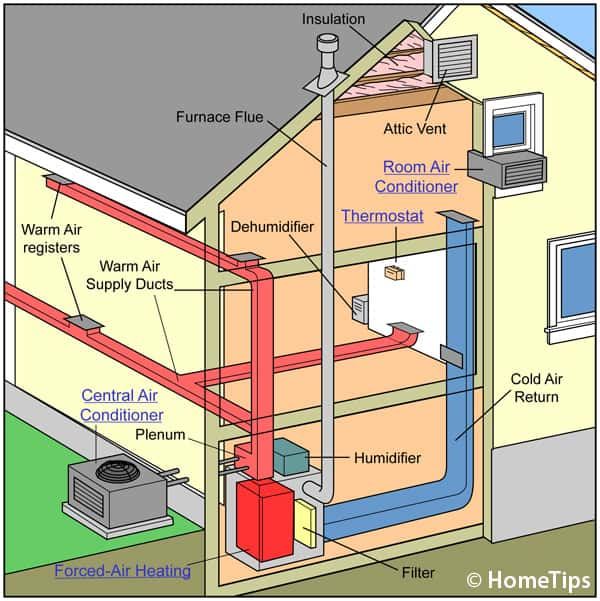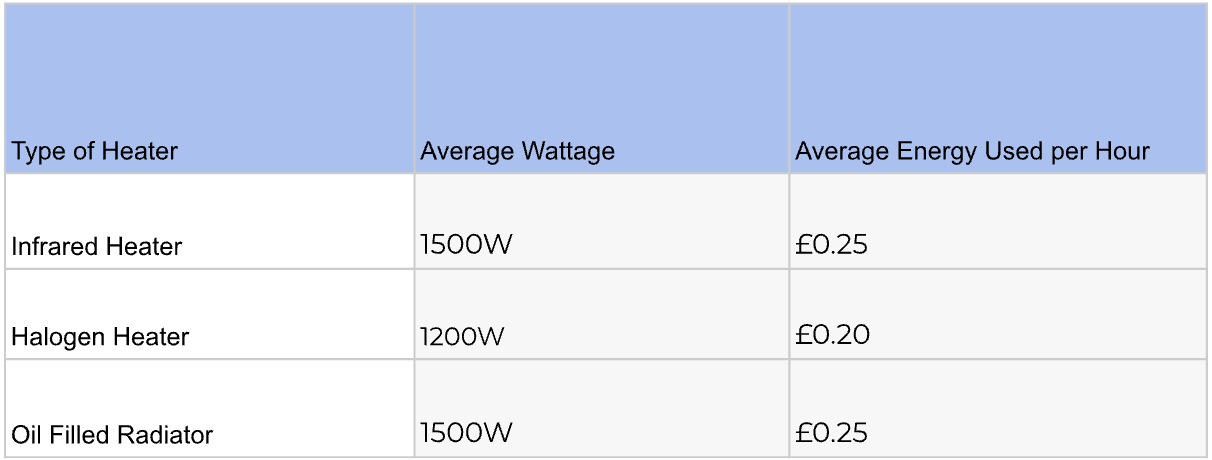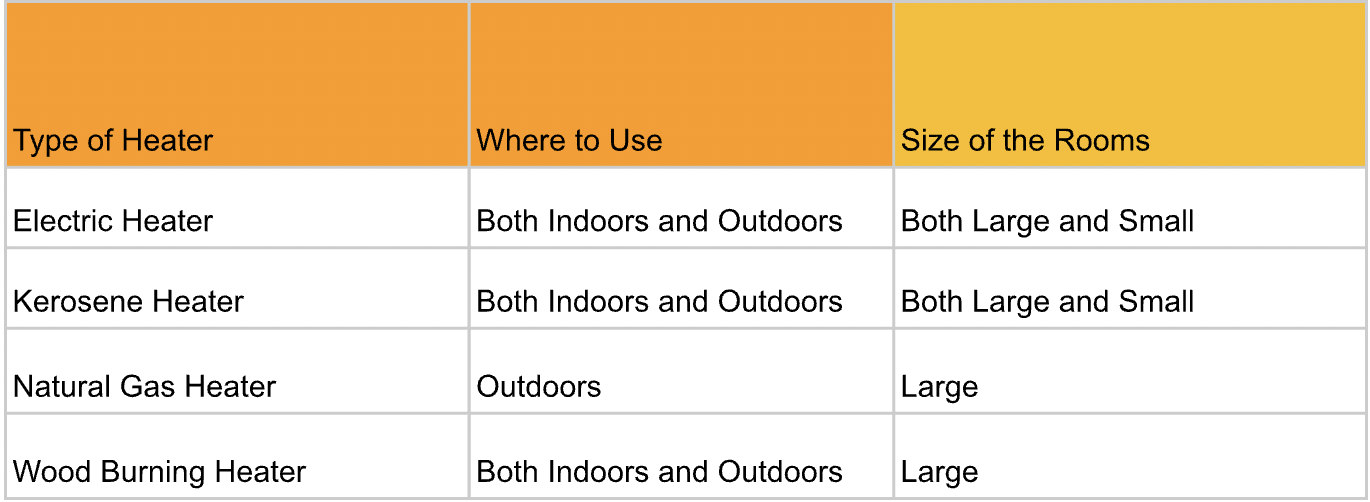Energy costs constitute a large percentage of everyone’s budget. Many people go wrong when selecting heaters during winter and spend a lot on energy bills.
Therefore, choosing the type of heater is crucial to saving costs and conserving the environment. That means that the cheapest heater should have higher efficiency and reasonable pricing. So, which type of heater is the most affordable to run?
Depending on the fuel you apply, you might anticipate paying a vast range in the price for home heating. Although electric heaters are the cheapest to run in your home, many individual brands of electric heaters have different efficiencies, making the best choice when purchasing one crucial.
Here, we examine the heating system that costs the least per fuel type and the cost-saving features that make them the best. So, read on.
Table Of Contents
Most Economical Electric Heater
The halogen heater is one of the most economical electric heaters. Because they offer instant heat in close quarters and have an average power output of 1200W, they should not be left on for extended periods.
You can get instant warmth from halogen heaters. The name “halogen heater” comes from the halogen element that, when paired with electricity, causes the heater’s bulb or light to glow and radiate heat. An electric halogen heater is among the most effective options for outdoor heating or drafty rooms, such as in a building without adequate insulation.
That’s because, unlike conventional heaters, halogen models may be set to focus infrared energy on a single object or person without warming the entire room. It’s an ideal type of heater for you if the whole room is usually chilly and difficult to heat because of drafts or poor insulation.
Because of their radiant heat, halogen heaters can only heat the space in front of them. They are ideal for a quick burst of heat but not for evenly heating an entire room.
Cheapest Electric Heater to Run In 2023
The cheapest electric heater to run in 2023 are infrared and halogen heaters. Although there are many electric heaters, infrared and halogen heaters are high-end solutions to your high power bills. Since halogen heaters are more expensive, you can start with an infrared heater.
They generally consume fewer watts and don’t need to operate more vigorously in drafty environments. One drawback of infrared heaters is that the temperature cannot be easily controlled.
Electric Heater
Electric heaters are the best heaters when it comes to keeping your house or exterior warm. They are also the cheapest and provide a wide range of options to select from in the market.
Since electric heaters can produce heat at a 100% efficiency rate, they consistently outperform the competition in efficiency tests. Yet, only 30% of the fuel energy in coal and oil boilers is turned into electricity. Beyond this, electric heaters are preferable because they pose no threat to your health and are less likely to explode or start a fire. Here are some electric heaters that are the most efficient and power-saving.
Infrared Heater
On the list of the most affordable electric room heaters, infrared heaters are high. The heaters produce a continuous, soft heat. The fact that these electric heaters are inexpensive to buy is not their best feature. Infrared heaters also use a minimal amount of energy. That means they are very cheap to run and slowly drain energy.
Infrared heaters raise the temperature of the surrounding area. They are also known as radiant heaters because of their functionality. Infrared heaters produce infrared rays, which heat nearby items. Unlike most traditional home furnaces, they influence the things in a room rather than the air.
Compared to other states of matter, solids absorb heat more quickly and release it quickly. In addition, as items are heated by infrared radiation, the environment and air are also heated. It, therefore, stands out to be the best for winters and cold days.
Features
- An integrated thermostat allows infrared heaters to control the heat output automatically.
- They also have fans to dissipate heat more quickly.
- Have Quartz bulbs, which serve as the primary heating element in infrared heaters. The worth of your heater increases with the bulb’s lifespan.
- Exteriors resist the heat.
Halogen Heater
People often confuse halogen heaters with infrared panel heaters because of their similarities in appearance. Like infrared panel heaters generate radiant heat, halogen furnaces use electricity to create radiant heat.
Most halogen heaters use “near-infrared” technology to generate intense, focused heat. On the other hand, far-infrared panels employ “far-infrared” technology to distribute heat across a larger region.
Neither of the heaters, however, uses convection to heat the surrounding air. Both types of heaters heat space objects. The heaters warm the surrounding air. Since this is the case, they are ideal for situations where it is difficult to maintain a comfortable air temperature.
Features
- Their halogen-filled bulbs and “near-infrared” technology generate intense, directional heat.
- They’re simple to operate, and you can direct the heat exactly where it’s needed, preventing wasteful heating of unused space.
- For safety against freezing, the units incorporate frost protection features.
Oil Filled Radiator
Oil-filled heaters have a fascinating operating concept. They combine thermal convection and radiant heat to warm the surrounding area. The fluid in the appliance absorbs the heat provided by the electric currents and goes into a specialized chamber where the chilly air is warmed.
The heat capacity and boiling point of diathermic oils are unique. The oil is ideal for heating because it absorbs and retains heat. Also, a specific diathermic oil is used for the liquid in oil-filled heaters.
The heater’s inbuilt resistor turns electrical energy into heat when electricity flows through it. The oil absorbs the heat and flows through the panel as it expands. When the oil begins to move, a switch activates the radiator, which releases the heat through its fins.
Once your desired temperature is reached, the mechanism will begin the cycle again. Yet, the process makes the heater quite sluggish. You’ll need to wait a bit for it to heat up to your preferred level.
Features
- Heaters filled with oil have resistors inside of them to turn the electrical current into heat.
- These heaters work because the diathermic oil inside them absorbs and transfers heat to the radiator.
- Moreover, radiators aid in the even distribution of heat throughout the space.
Kerosene Heater
There are many advantages to using a kerosene or paraffin heater as a supplementary heat source. For instance, when the power goes out, they are a portable heat source in an emergency. Nonetheless, they are very efficient at heating huge spaces.
Kerosene heaters have advanced in design, with some models now using electricity to run a fan that blows the warmed air out of the room. Modern kerosene heaters also feature thermostatic controls for added convenience. Most kerosene heaters, however, can be used without an electrical connection.
Furthermore, most modern space heaters have a battery-operated or piezo-electric ignitor that starts the warmer without needing matches. Nonetheless, it’s possible to ignite the heater if the ignitor stops working manually.
Natural Gas Heater
Natural Gas Heaters, also called LPG heaters, are available in various styles. Since they warm the air and the surrounding items, natural gas heaters are best suited for heating large rooms.
If possible, natural gas heaters should not be used in small, less insulated rooms. Two important reasons are that they degrade air quality and generate potentially deadly levels of carbon monoxide. Only used in the great outdoors, wood-burning and patio heaters are prized for their aesthetic appeal, low cost, and efficiency.
On the other hand, the cost of heating with natural gas heaters is variable according to the going rate for gas in your area.
Wood Burning Heater
With the rising gas prices, using a wood-burning heater is increasingly common. They are so effective at warming a full room without too much electricity that they won’t break the bank.
The one caveat is that you require a chimney setup to get the best wood-burning heater. It’s worth noting that a wood-burning heater is far more efficient than a standard fireplace. On the other hand, it can be an environmental pollutant.
Low-Cost Energy-Efficient Heaters for Large Rooms
For large rooms, Oil-filled heaters are efficient and quiet enough to use even in bedrooms. They are excellent heat retainers despite being more costly upfront than an electric heater. As a result, once they achieve the ideal temperature, they may keep giving off the heat at a lower cost than their electric equivalent would.
Wrapping Up
Compared to other electric heaters, halogen heaters turn out to be the most cost-effective due to their reduced power output.
Thermostats and timers are typically included with the higher wattage heaters, allowing you to manage the temperature precisely and the length of time it stays on. That will aid in keeping maintenance costs down. Ultimately, your decision should be guided by your intended use for the heater.




